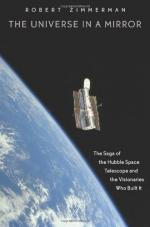|
This section contains 8,955 words (approx. 30 pages at 300 words per page) |

|
Astronomy is the scientific study of the physical universe beyond Earth's atmosphere. At its most basic, astronomy is essentially about the observation of light. The ability to gather light is the key to acquiring useful astronomical information. The larger the primary mirror of a telescope, for example, the greater its light-gathering capabilities and the greater the magnification of the instrument. These two attributes allow a large telescope to view fainter, smaller objects than a telescope of lesser size.
Astronomy is not just about visible light, however. Visible light, also known as optical radiation, is only one form of electromagnetic radiation, a collective term for radiation consisting of electric and magnetic waves that travel through space at the speed of light, approximately 186,000 miles (299,274 kilometers) per second. Like any wave, those that make up the forms of electromagnetic radiation can be described by two properties: wavelength and frequency...
|
This section contains 8,955 words (approx. 30 pages at 300 words per page) |

|


